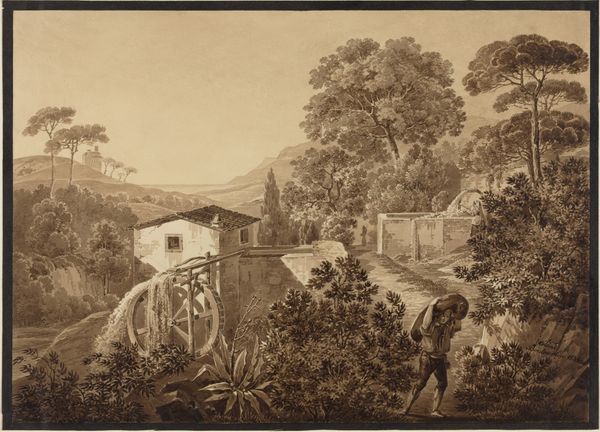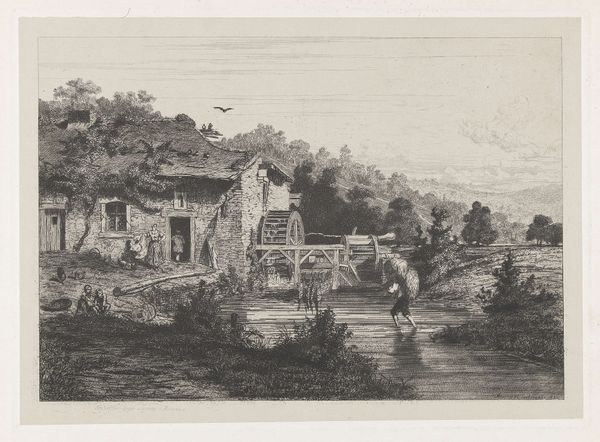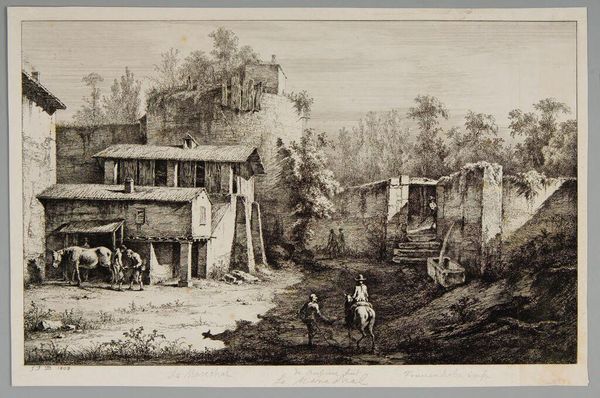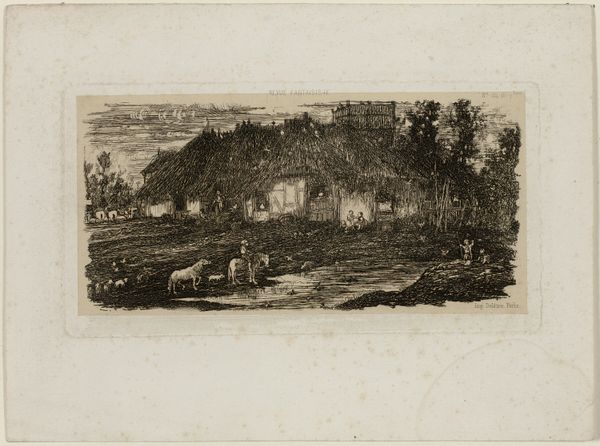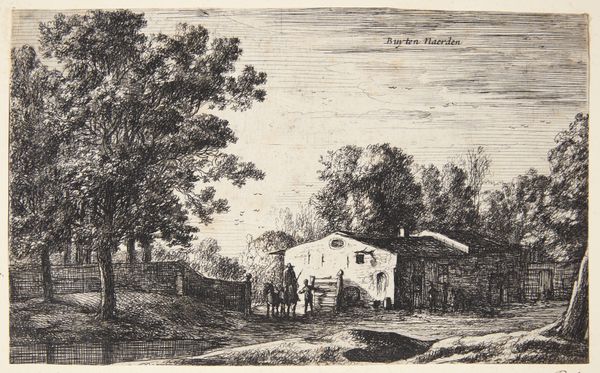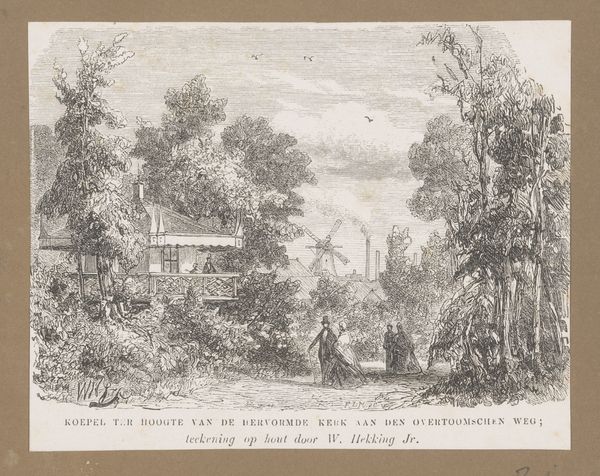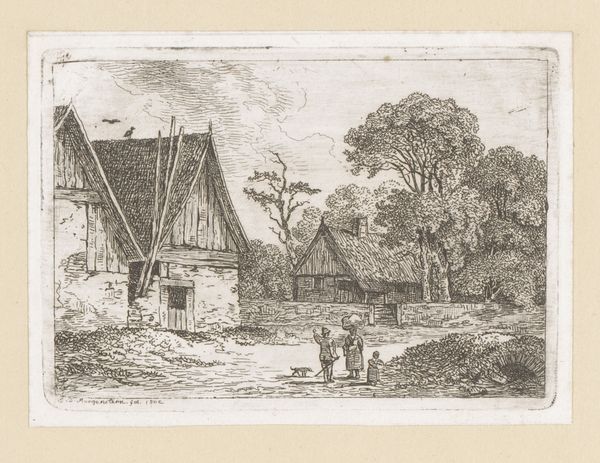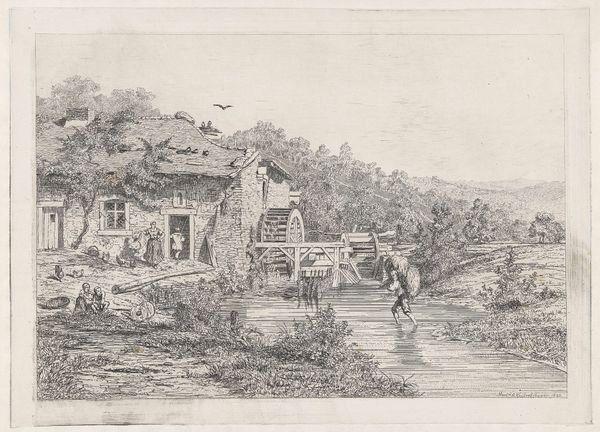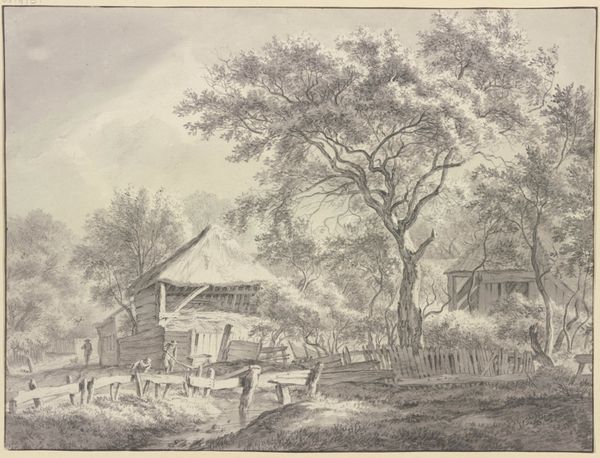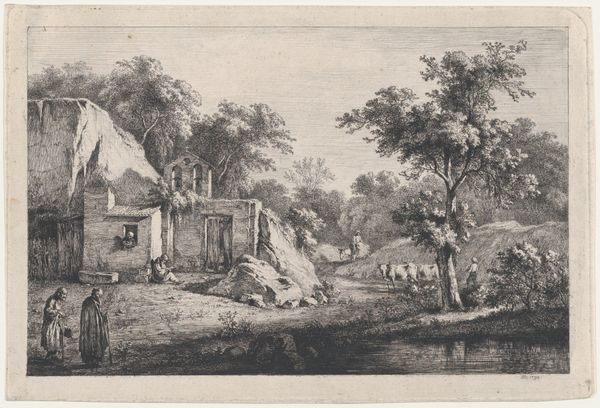
Landscape with Farrier, View of Terrebasse, France 1808
0:00
0:00
drawing, print, etching, engraving
#
drawing
#
neoclacissism
# print
#
light earthy tone
#
etching
#
human-figures
#
landscape
#
romanticism
#
engraving
#
building
Dimensions: Sheet: 12 7/8 × 18 3/4 in. (32.7 × 47.6 cm) Plate: 9 7/16 x 13 3/4 in. (24 x 35 cm)
Copyright: Public Domain
Editor: So, this is "Landscape with Farrier, View of Terrebasse, France" created by Jean Jacques de Boissieu in 1808. It’s an etching and engraving, currently at the Met. There's a real sense of everyday life depicted; the contrast between the figures and the architecture is also quite striking. What stands out to you in this work? Curator: Immediately, I'm drawn to the means of its production. An etching and engraving implies a specific division of labor. The plate had to be prepared, the design incised, acid applied, and then printed. Each step necessitates different skills and likely involved various individuals, maybe even within a workshop setting. It isn't just a singular artistic vision, but a product of collective making. What can you observe about the specific setting and its representation in terms of labour? Editor: Well, there’s a farrier shoeing a horse, so clear labour happening. But it’s almost romanticized – a picturesque scene of labour rather than a harsh reality. There is a sense of idealization of rural life, which hides potentially hard labor realities behind pretty scenery. Curator: Exactly! The romanticisation raises an interesting point about consumption. Prints like these were often made for a rising middle class eager to consume images of the idyllic countryside, divorced from the realities of rural labor. They're consuming not just an image but a fantasy, and this act of consumption is central to its meaning and value. Do you see the distinction between ‘high’ art and ‘craft’ here in terms of production? Editor: I think I see what you mean. Although Boissieu is the named artist, the process required skilled artisans. It blurs that line because the "art" relies on craft, the act of engraving itself, so much to come to fruition. It suggests that even "high art" depends on sometimes unrecognized craftspeople, challenging the art historical emphasis on individual genius and pure authorial vision. Curator: Precisely. The focus on materiality and the process invites a deeper exploration of who makes art, for whom, and under what conditions. Editor: It completely changes how one might typically appreciate the artwork; focusing instead on the complex relationships of making, materiality and consumption! Thanks.
Comments
No comments
Be the first to comment and join the conversation on the ultimate creative platform.
